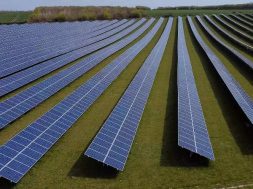
Swedish Team Improves Flaws of Organic PV Cells With Active Polymer
Swedish universy LiU has successfully developed a new printing process capable of improving the flaws of organic PV cells, in addition to cutting cost, further brightening the prospects of such PV cells, which promise substantial potential, thanks to the merits of softness and low cost, the latter resulting from low-cost materials and simple printing technology for production.
Olle Inganäs, professor in biological molecule and organic electronics at LiU, points out that organic PV cell can be produced in translucent, soft, and pliable form, even in various colors, on top of low production cost, enabling it to be applied in any spot. To further augment its performance, the LiU team improves its printing process.
In the study, electricity-conductive polymer PEDOT:PSS was added to positive electrode and cathode forming an organic PV cell, with thin threads being cathode-type and positive electrode materials, plus active layer between positive electrode and cathode capable of absorbing light for the production of electrons.
The study shows that when positive electrode/cathode and active layer overlap forming into a thin film, the original trap will deteriorate, due to the attack by another trap during the printing process, leading to short circuit. Olle Inganäs notes that consequently, PV cell modules are prone to malfunction, due to the difficult and time-consuming task of removing traps, although most of them can be rectified by current.
The research team has discovered a new method to solve the problem, employing active polymer, as a substitute for glue, to envelop positive electrode/cathode and active layer during the printing process, a method which reduces the number of printed layers to two and thus the number of traps during the lamination process.
Olle Inganäs expresses that the team also found that a flexible and stable PV cell module would be formed with active polymer enveloping the two aforementioned layers in the new process, in addition to increase of photocurrent by 45%.
The study shows that humidity tends to dampen efficiency of PV cells, facilitating capture of electrons by traps in materials before they reach positive electrode/cathode. The R&D team solves the problem by producing a film for positive electrode and cathode, thereby insulating them from air. “We have proven that the lamination method is applicable to various combination polymers, with resulting energy efficiency comparable to traditional production method,” remarks Olle Inganäs. Thesis on the study has been published in《npj Flexible Electronics》.
Source : energytrend
















